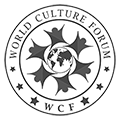CULTURAL HERITAGE AND THE CHALLENGES OF ITS PRESERVATIONS
Heritage is a product selection by society which is of immensurate value to that particular society and is passed down from generation to generation. So not all heritages of past generations are heritage but heritage is a product of selection by society. We can also say heritage is a legacy from our past. It is a living part of our life today and the stories and places we pass on to future generations. Cultural heritage includes certain tangible and intangible heritage assets of a group or society. Cultural heritage can be an economic asset, a tourist attraction and an identity factor, and it can also contribute to social cohesion. Heritage can have natural, indigenous and or historic values.
UNESCO defines cultural heritage broadly as the legacy of physical artefacts and intangible attributes of a group or society that are inherited from past generations, maintained in the present and bestowed for the benefit of future generations.
UNESCO adopted a convention concerning the protection of the world cultural and natural heritage in the year 1972, known as the World Heritage Convention. The mission of the World Heritage Convention is to identify, protect, conserve, present and transmit to future generations the world’s outstanding cultural and natural heritage.
This year UNESCO will observe the 50th anniversary of the World Heritage Convention on 16th of November (16-11-2022). It is to be celebrated under the theme “World Heritage as a source of resilience, humanity and innovation. In relation to its 50th anniversary, UNESCO is observing a series of conferences and also launched a Dialogue Series – “50 Minds for the Next 50” to convene fifty leading, innovative, bold, respected thinkers of our times from diverse disciplines for the most interdisciplinary discussion on World Heritage ever to be held.
While our relationships with our cultural heritage evolved over the years, changing rainfall patterns, intensifying storms, and rising temperatures continued to pose challenges. The global nature of our changing climate underscores the need for pragmatic, replicable strategies to safeguard our cultural heritage. But today, human activity has become the greatest danger to the world’s cultural heritage, far exceeding the combined threats of floods, earthquakes, and climate change.
While tourism to global heritage sites is exploding, funding for heritage preservation remains anaemic. Current funding for heritage conservation from international agencies, major foundations, and corporations is a fraction of what is needed to solve the crisis facing the developing world. For most global development agencies, private foundations, and corporate responsibility programs, global heritage preservation is seen as a luxury rather than a necessity or core asset in poverty alleviation and development strategies.
Sometimes in the name of preserving cultural heritages, insufficient expertise and unscientific restoration lead to one of the most debilitating threats to heritage. While discreet use of modern materials can prolong the life of heritage sites without jeopardizing their authenticity, unscientific reconstructions are often the norm in countries that want to rapidly promote tourism. Such practices should be checked if the significance of our great inheritances is to be preserved for generations to come.
Through sustainable preservation and responsible development of global heritage sites, we can also tackle one of the most pressing issues of our time which is poverty. For many developing countries, cultural heritage sites provide one of the only major opportunities for sustainable economic growth. By protecting these assets, we can bring long-term economic growth. However, we should be careful as to not overburden and over utilize our assets. Tourism can threaten the very asset it relies upon.
Therefore specific policies, programmes, laws and guidelines should be issued from concerned authority to handle the issue from time to time to avoid overuse and its destruction. It is important now to place the issues of heritage conservation within the overall process of urban development, as well as interlink it with other issues such as tourism development, revitalization of the local economy.
Let us now travel across the continents and check few cultural heritage sites and read about their significance and know the reasons as to why they needed to be preserved.
